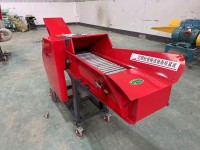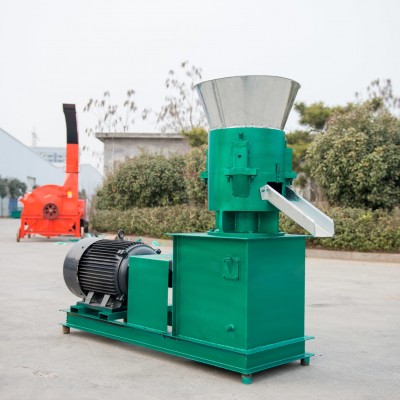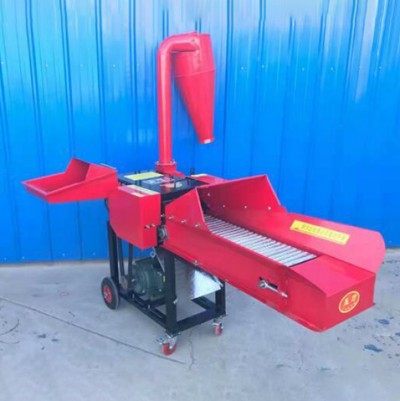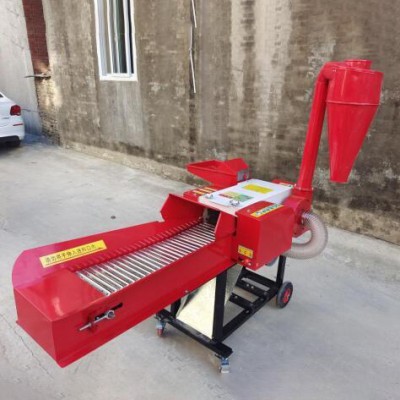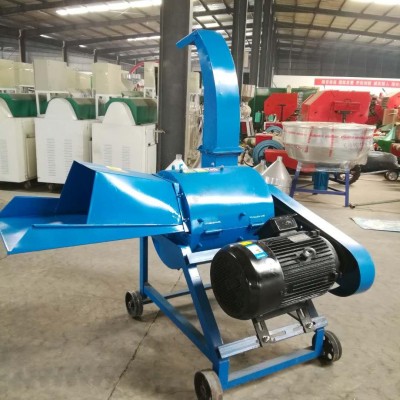
1. When using and adjusting the upper surface of a small grass mower, add a gasket under the fixed blade holder to adjust it to a blade slightly higher than the comb plate.
2. Common faults and troubleshooting
1) Adjust the cutting gap (gap between the moving and fixed blades) of a small grass mower. Before operation, open the machine cover and check the cutting gap first. It is best to be between 0 and 0.12 mm. For coarse, dry, and brittle materials, the gap can be larger; for fine, wet, and tough materials, the gap should be smaller. The method for adjusting the cutting gap is to first loosen the moving blade fixing nut, and then loosen the locking nut of the adjustment bolt. If the cutting gap is large, screw in the adjustment bolt to push the blade down; otherwise, the broken grass on the blade cannot be thrown out. If the speed is incorrect, the appropriate motor and pulley should be selected according to the instructions to make the spindle speed consistent with the regulations. If the grass baffle is installed incorrectly, check the grass baffle above the cutter wheel cover and adjust the gap between it and the blade. If the grass outlet of the grass receiving bucket is not in the right position, the grass receiving bucket should be adjusted so that the grass outlet is slightly higher than the grass outlet of the blade cover. The gap becomes larger. After the gap is adjusted, tighten the adjustment nut and the fixing nut of the blade, and finally check whether the gap has changed, whether the two ends are consistent, and whether there is no friction between the moving blade and the fixed blade. After satisfactory, cover the machine cover.
2) Check whether the fasteners of each part of the small grass chopper are loose, especially the comb plate. If they are loose, tighten them in time. Adjust the tightness of the triangular tape to an appropriate degree.
3) Before starting the small grass chopper each time, add lubricating oil to the feed roller bearing once.
4) Before starting the machine, turn the large pulley clockwise by hand for a few turns to observe whether the machine has any collision or abnormal sound. When it is confirmed that all rotating parts are working normally, start the machine again, and run it idle for a few minutes, and then feed grass.
5) The grass between the upper and lower feeding shafts of the small grass chopper is blocked. If the feeding amount is too large, the machine should be stopped first, and then reversed to eliminate the grass blockage. If the lower feeding roller is entangled with grass or the lower feeding roller is blocked with grass between the over-extrusion, the machine should be stopped to clean the grass entanglement on the feeding roller and the blockage of each part.
6) The small grass cutter has long grass. If the gap between the moving blade and the fixed blade is too large, the gap between the moving blade and the fixed blade should be adjusted. If the blade of the moving blade or the fixed blade is too blunt, the moving blade should be sharpened or the fixed blade should be replaced.
7) There is an obvious impact sound in the small grass cutter. If there is a hard object in the working room, the machine should be stopped immediately to check and remove the hard object. If the fixed blade collides with the moving blade, the blade gap should be adjusted and the bolts should be tightened.
8) When feeding grass with a small grass cutter, pay attention to the continuous and uniform speed. If the transmission gear is missing teeth, the machine should be stopped to repair or replace the gear. The appropriate feeding amount for cereal straw and rice straw is about 47 mm in diameter.
9) The bearing chamber of the small grass cutter is hot. If the oil is insufficient, unscrew the bearing chamber gland and add oil. If the bearing chamber is exposed to debris, causing rapid wear, stop the machine immediately, remove the debris, and then repair or replace the bearing.
10) Sharpening. The moving knife should be sharpened once with oilstone and engine oil every two shifts (16 hours) without disassembly; the fixed knife can be removed and sharpened once every 60 hours.
View document


 English
English 日本
日本 한국인
한국인 Français
Français Deutsch
Deutsch español
español Italiano
Italiano Portugal
Portugal Việt Nam
Việt Nam türkiye
türkiye عرب
عرب Русский
Русский čeština
čeština แบบไทย
แบบไทย Eesti
Eesti Gaeilge
Gaeilge Hmoob
Hmoob íslenskur
íslenskur Cymraeg
Cymraeg български
български اردو
اردو Polski
Polski Hrvatski
Hrvatski українська
українська bosanski
bosanski فارسی
فارسی lietuvių
lietuvių latviski
latviski עִברִית
עִברִית Română
Română Ελληνικά
Ελληνικά dansk
dansk Magyar
Magyar norsk
norsk Suomalainen
Suomalainen Nederlands
Nederlands svenska
svenska slovenský
slovenský Slovenščina
Slovenščina हिंदी
हिंदी Indonesia
Indonesia Melayu
Melayu Malti
Malti Kreyòl ayisyen
Kreyòl ayisyen català
català বাংলা
বাংলা Српски
Српски o'zbek
o'zbek


